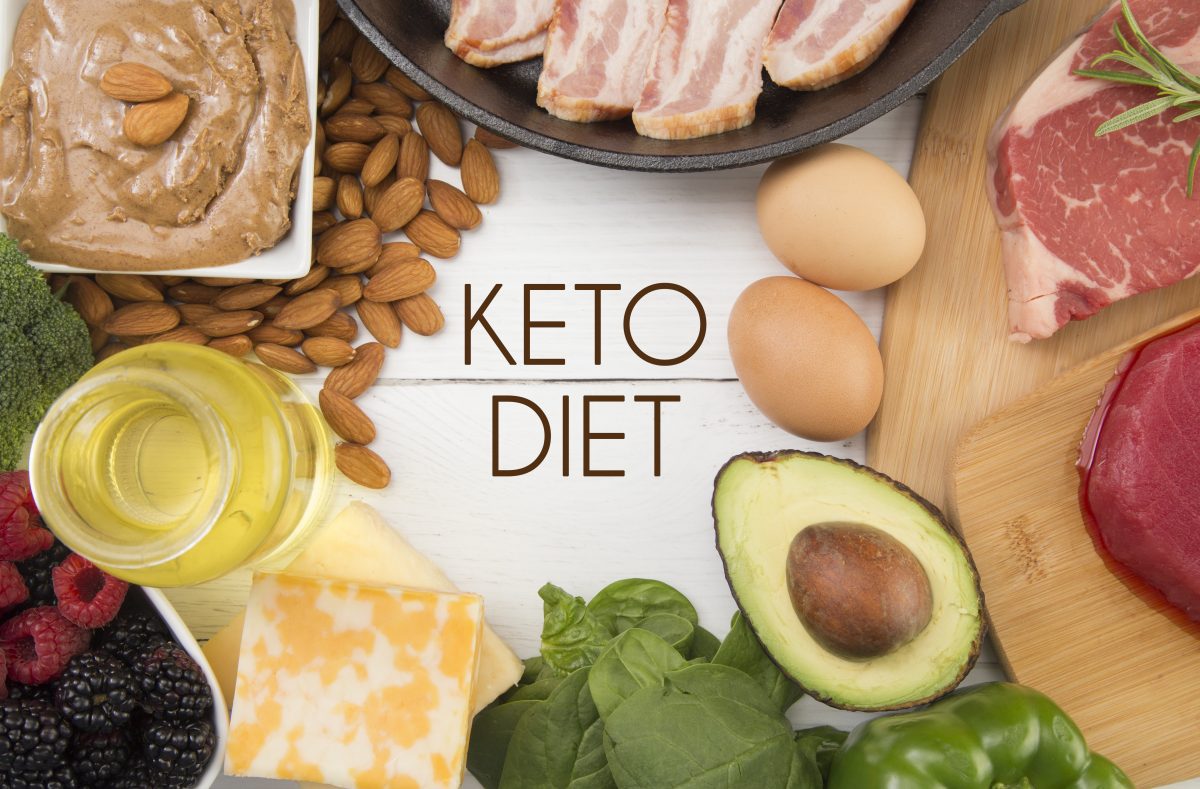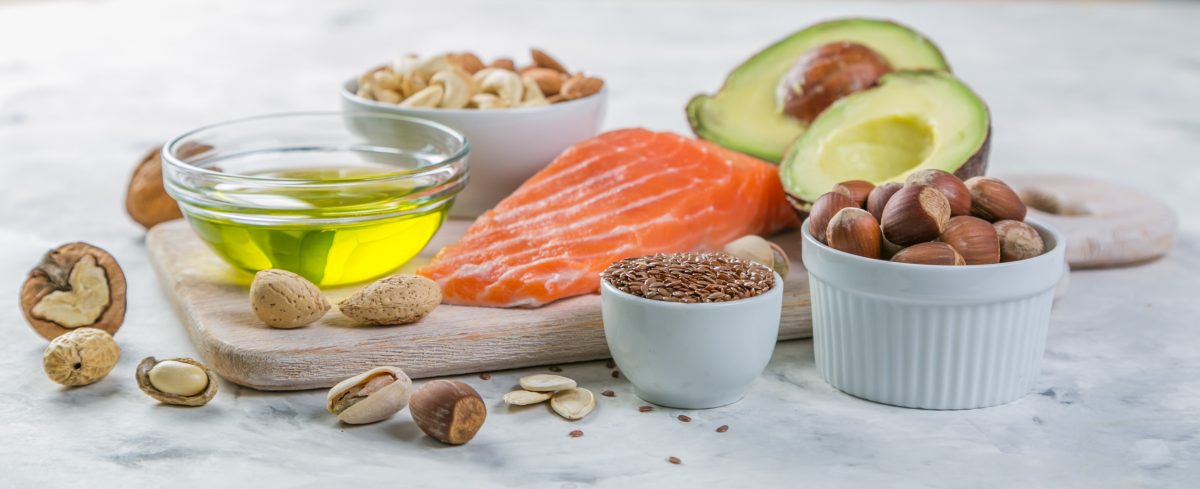If you’re looking for the fastest way to lose fat, you’ll surely hear the terms keto, ketogenic, or keto diet. Ketogenic diet is one of the most popular techniques in the world, which allows you to burn huge amounts of fat while improving health and well-being.
Ironically, keto diet uses a high intake of fatty foods to lose fat. That’s why this method has been restricted for years in many hospitals because of the risks it may pose. However, new researches show that keto diet may improve one’s health and may even help address chronic diseases, such as diabetes, cancer, and even Alzheimer’s disease. That’s why many restaurants and delivery companies started adding keto-friendly dishes to their menu.
What Is Keto Diet?
A keto or ketogenic diet works by consuming meals high in fats and low in carbs, putting your body in a metabolic state called ketosis. It is a process when you don’t have enough carbohydrates to burn. Instead, your body will burn excess fats and produce ketones. These ketones will be used for fuel instead of carbohydrates.
Moreover, since your body still requires carbohydrates to function properly, keto diet makes room for a small amount of carb intake.
What Are The Benefits Of Keto Diet?
The main purpose of this diet is to treat neurological diseases such as epilepsy and Parkinson’s disease. In addition, Lina Cellante says the keto diet has advantages such as:
- Improved insulin levels and lowering blood pressure: When you’re on a keto diet, your body will rely on ketones. As mentioned above, it’ll be your source of energy instead of carbs.
- Reduced blood pressure: Studies show that around 90% of keto diet users reduced their systolic blood pressure due to the presence of ketone bodies.
- Decreased sense of hunger: According to several studies, the decrease in appetite is caused by small amounts of sugars in the body and fluctuating insulin levels.
However, be mindful of the side effects and potential risks it may bring, such as:
- Keto flu
- Sleep issues
- Digestive discomfort
- Inability to perform well during exercise
- Decreased amount of protein in the blood
- Excess fats in the liver
That’s why it is crucial to execute this diet properly to avoid unwanted symptoms. If you’re not yet familiar with the keto diet, these basic rules will help you on your journey:
Rule 1: Know What Food You Should Take And Avoid
Constructing a keto meal plan is not easy. You have to consider the composition of the following foods, such as carbohydrates, proteins, and fats. Some foods may be high in fats but also high in carbs, low in carbs but also high in protein, and some are almost entirely made up of carbs, such as bread.
To give you an idea, here is a list of what a typical keto diet consists of:
- Red meats such as pork, grass-fed beef, or veal
- Chicken or turkey
- Fatty fish such as salmon or mackerel
- Organic or free-range eggs as much as possible
- Full-fat cheese such as mozzarella, cheddar, or cream cheese
- Dairy such as yogurt, butter, or heavy cream
- Nuts and seeds such as almonds, walnuts, flaxseeds, or macadamia
- Nut butters such as almond or peanut butter
- Healthy oils such as coconut oil, olive oil, or sesame oil
- Avocados, which can be eaten as is
- Vegetables without starch such as leafy greens, mushrooms, or broccoli
- Salt, pepper, and other spices
On the other hand, here are foods to avoid during the diet:
- Bread and other pastry goods such as white loaf bread, sandwich, cookies, cakes, or doughnuts
- Sweet and sugary desserts such as maple syrup, ice cream, candies, or sugars
- Alcoholic beverages made with cereals such as beer
- Sweetened drinks such as soft drinks, juices, or sports drinks
- High-carb sauces such as barbecue sauce and other salad dressings and dippings
- Pasta
- Vegetables full of starch such as potato, corn, or butternut squash
- Grains or products made with grains such as rice, oatmeal, cereal, or tortilla
- Beans and legumes
- Unhealthy fats and oils such as lard, vegetable oils, or mayonnaise
Choose your diet well, especially if you have certain medical conditions that won’t allow you to take certain foods, such as dairies.
Rule 2: Eat The Good And Healthy Fats
Some fats do not deserve to be mistreated. These fats are responsible for restoring good cholesterol or HDL (high-density lipoprotein), and decreasing bad cholesterol or LDL (low-density lipoprotein).
There are two types of fats, saturated and unsaturated fats. Saturated fats are commonly found in meats and dairy. They are thought to be the ‘evil’ fats, but actually, they’re not as long as you eat them in moderation. According to experts, the recommended saturated fat intake is only 13g daily.
The other one is unsaturated fats, which is present in olive oils, avocados, and other food items. These are the so-called ‘good’ fats because of their beneficial effects on your body. According to experts, people should focus on eating these fats as they’re thought to be responsible for keeping everyone’s heart healthy.
Some nutritionists also suggest that people should go for nuts instead of eating chips and use avocados for dippings like guacamole. As for savory meals, they recommend using olive oil as much as possible.
Rule 3: Consume Non-Starchy Vegetables
Why should you go for ‘non-starchy’ vegetables? Starch is a chain of sugars forming complex carbohydrates. Unlike most sugars, starch cannot be easily digested. So, if you’re planning a keto diet, avoid vegetables high in starch, such as potatoes, sweet potatoes, and sweet corn. And look for non-starchy vegetables, such as celery, asparagus, broccoli, and mushrooms.
In addition, these vegetables could help supply the necessary fiber for your body. They have a high satiety level, so you will feel full quickly without consuming more calories.
Moreover, vegetables provide adequate nutrients you won’t get by just consuming meats and fats. However, all things consumed in excess are bad for your body. Try to consume at least one cup of veggies per meal.
Rule 4: Watch Your Proteins
Proteins are one of the macronutrients responsible for building one’s body. They’re also responsible for a good ratio of muscle mass and keeps your skin, nails, and hair healthy. People who don’t consume enough protein are most likely to experience the following conditions:
- Thyroid problems
- Depleted muscle mass
- Fatty liver
- Hormonal imbalances
- Weight problems
However, excess protein, especially if you’re not working out, may not be ideal under keto diet. Excessive intake of protein may result in hyper-regulated gluconeogenesis (GNG) and push you out of ketosis, ruining all your efforts.
So, what is gluconeogenesis? It’s the process of transforming non-carbohydrate carbon-based substrate like proteins into glucose. Proteins and carbohydrates have a similar compound structure. The only difference is the nitrogen present in proteins. Through this process, proteins become glucose, preventing your body from relying on ketones produced during ketosis.
GNG is a naturally-occurring body process, especially if you’re low on carbs. This process will help supply carbs on tissues and organs that can’t function using ketones alone. What you want to prevent is the excessive production of glucose due to excessive protein intake.
Furthermore, consider your meal ratio, and make sure that you’re getting enough protein.
Rule 5: Consume Fermented Foods
Fermented foods contain probiotics, good bacteria responsible for keeping a healthy digestive tract, and prebiotics (food for probiotics). These bacteria help in regulating your digestive system as you consume more fats and preventing side effects from a high-fat diet. A healthy gut with a rich microbiome could strengthen your immune system and help fight various diseases.
Some fermented foods to add to your meal are:
- Sauerkraut: Fermented raw cabbage with lactic acid bacteria
- Kimchi: South Korean staple made by fermenting raw napa cabbages in spicy red pepper sauce
- Yogurt: Fermented dairy product and suitable for those who are lactose intolerant since lactose are converted into lactic acid by bacteria during fermentation
- Kefir: Fermented milk with added grains
Rule 6: Grab Your Pans And Cook
With many limitations on what to eat, your best approach would be to learn how to cook. This is better than eating from fast-food chains or restaurants. As a cook, you’ll know what you should and should not put on your food. If you have no time to cook, then a keto meal delivery is all you need.
When you cook, you have full control over your meals. This allows you to play with veggies and experiment with different spices. However, if you’re on a keto diet, you still have to follow the proper amount of food intake.
Final Words
With new studies and evidence, the keto diet trend is not just a hype. If properly designed, this diet could elevate your overall health and lifestyle by improving your mood and accelerating your weight loss. Food and meal planning can seem like a chore to some people, most fitness trainers, and dietitians use personal trainer apps for managing their client’s diet plans.
But if you plan to gain more muscle, a keto diet may not be suitable for you as you need to consume high protein and carbs with minimal fats.
If you’re still confused about how this trendy diet works, call your doctor or a keto-trained professional to guide you, especially if you have other health conditions. They could help you create a plan that is best for you.


